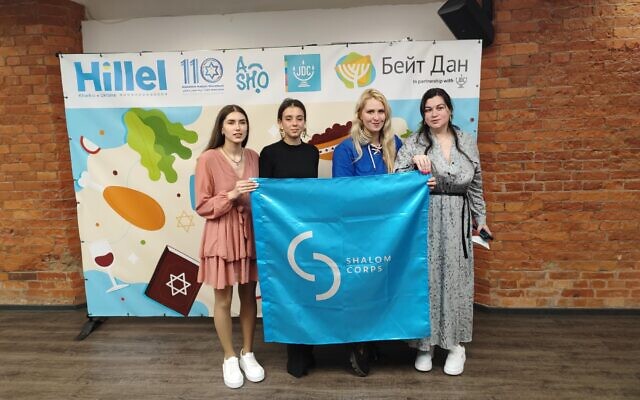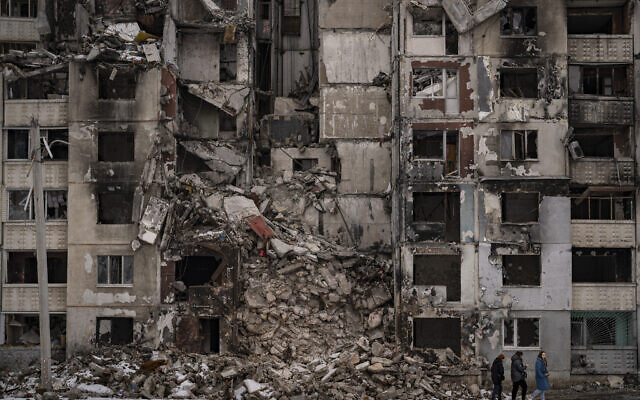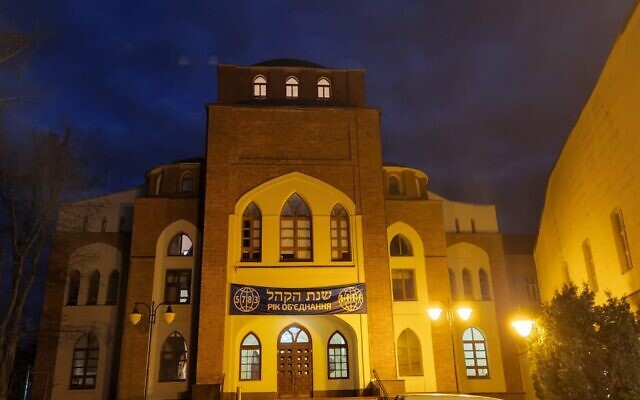Israeli Youth Movement Opens Community Center in Ukraine
Open to all of Kharkiv’s residents, the Asho Center features one of the bombed-out city’s few running kindergartens.

Ukraine has provided Israel’s Kibbutz Movement with some of its most prominent members, from late prime minister Golda Meir of Revivim to composer Mordechai Zeira of Afikim.
Now, Israel’s kibbutzim are returning the favor by opening a community center and kindergarten in war-torn Kharkiv, where people of all ages will be able to receive free meals, subsidized education and daycare, and activism training based on the Kibbutz Movement’s many decades of experience.
The new center, which opened last week with an annual budget of $276,000 provided by Havatzelet, the humanitarian fund of the Kibbutz Ha’artzi Hashomer Hatzair movement, which has set up dozens of kibbutzim in Israel and is part of the Kibbutz Movement, is intended for the general population of the city, which Russian artillery targeted and partially destroyed early in its invasion of Ukraine.
Run and partially funded by members and donors of Hashomer Hatzair, a Jewish socialist youth movement that’s based in Israel but has many international branches, the opening of the Asho Center was celebrated at a particularly festive Passover Seder meal attended by 149 local Jews, according to Oren Zukierkorn, secretary general at Hashomer Hatzair World Movement.

Despite the Seder meal at the new center, which is based in a building that the municipality has made available to Hashomer Hatzair until 2027, Zukierkorn stressed that “it’s not a Jewish community center. It’s intended for everyone.”
“The staff is largely Jewish and there are Jewish movements behind it, so naturally, there are many Jews among the residents who are showing up to the new center,” he told The Times of Israel.
Zukierkorn described the new center as “a slice of the kibbutz in Kharkiv.” Open every day of the week, it is running with help also from the local Hillel Movement of Jewish students and staff and volunteers of Beit Dan, the local Jewish cultural center, which is funded by the American Jewish Joint Distribution Committee.
The kindergarten, which currently has 50 children but can accommodate 100, is operating out of a bomb-proof cellar. It is one of the few institutions in Kharkiv where parents can physically bring their children, as all public education frameworks are operating online for fear of Russian bombings.
“We intentionally gave the kindergarten the status of a private daycare, rather than a public institution operating under the municipality’s auspices, so that we can keep it open and give children the frameworks they need, and their parents the ability to work normally,” Zukierkorn said.

The kindergarten switches over to daycare mode at 2:30 p.m., also receiving elementary school children up to the age of 11. It stays open until the evening hours. Additionally, the center provides adult classes and a 12-lesson course in local activism and community-building for adults.
“The adult training gives locals the tools to improve their environment, which the war has ravaged,” Zukierkorn said. “It’s about giving them the know-how on how to go about getting the municipality to fix potholes but also how to take care of other issues on their own: making a community garden, painting road markings.”
Kharkiv, from which about a third of the prewar population of 1.5 million has fled, still has power shortages and water outages. Before the war, the eastern city boasted one of the largest Jewish communities in Ukraine, with at least 30,000 members. Many of them have fled to other parts of Ukraine, and thousands have emigrated, mostly to Israel. The city has multiple Jewish schools and kindergartens, as well as several synagogues and two Jewish community centers.
As a project, the new center is unusual for Hashomer Hatzair, whose involvement in relief operations has been limited in comparison with other Jewish groups, like JDC. Nonetheless, Hashomer “switched gears and went into action on the first day of the fighting, culminating in the opening of the new center,” Zukierkorn said.
As a socialist youth movement, Hashomer Hatzair, which is responsible for establishing dozens of kibbutzim in Israel since its establishment 100 years ago, faces some challenges in post-Communist countries, Zukierkorn said. “There’s an understandable suspicion by people who have experienced Communist tyranny,” he explained.
This is part of the reason that in post-Communist countries, Hashomer Hatzair uses blue instead of red as the background for its flag. Additionally, in those countries, the youth movement begins holding activities only for high school students, and not elementary schoolers, as in the rest of the world.
“The Communists have coopted socialism, giving the social-democratic movements, which Hashomer Hatzair is, challenges,” Zukierkorn added. “But we’re overcoming them through work on the ground, and the Kharkiv center is part of that effort.”



comments